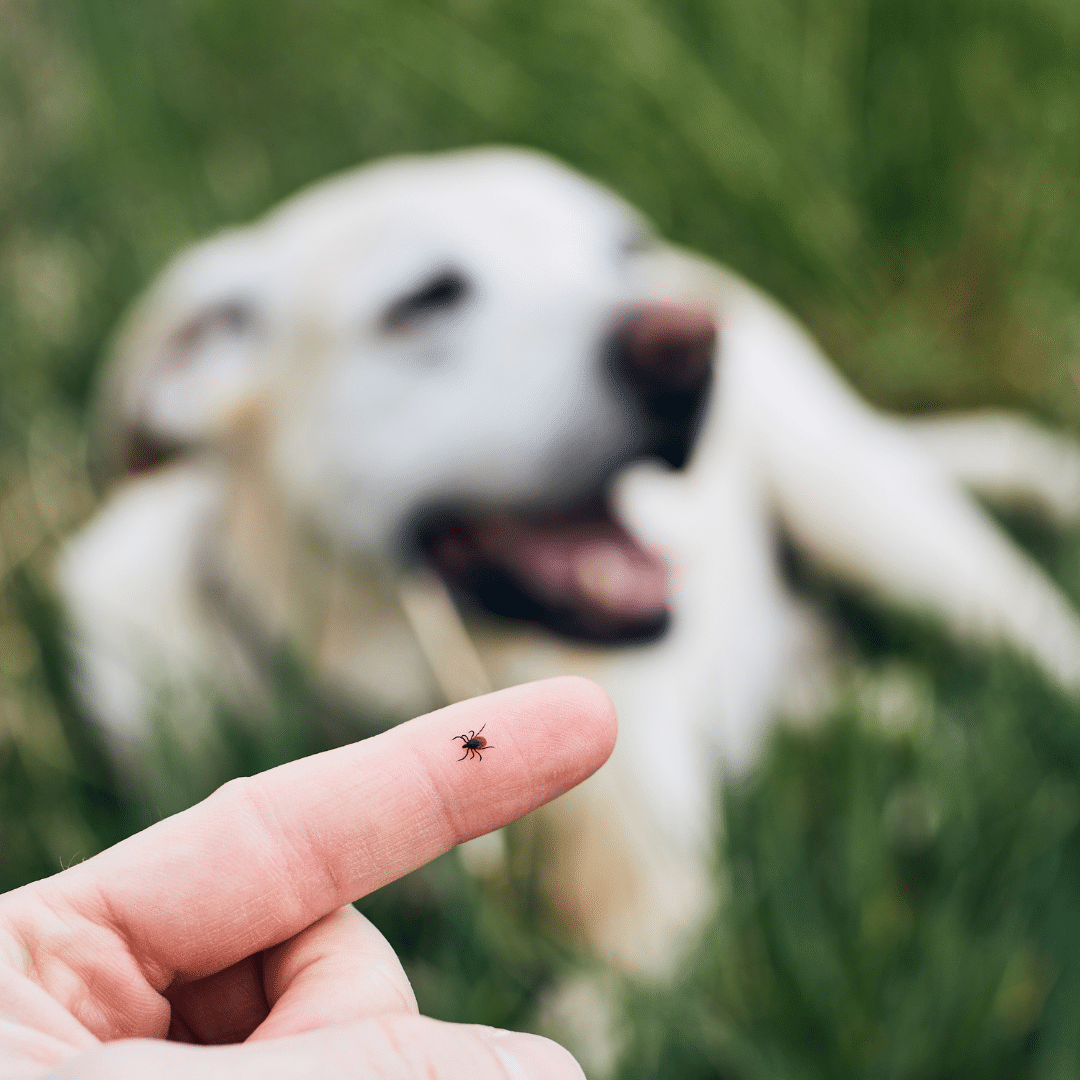Preventing tick paralysis in dogs starts with controlling the tick population on you property. By this time of year, ticks have taken over. These pests are typically active in the warm months of spring and summer and swarm in a matter of minutes. So, what does this mean for you? Ticks may seem inconsequential due to their small stature. However, ticks can cause incredible damage to not only your property but your pets too. Ticks may be tiny critters, but they are capable of causing great damage!
So, what is tick paralysis? Ticks are parasites, otherwise known as blood feeders. These parasitic pests will attach themselves to one host and feed off their blood. The relationship between tick and host is without a doubt one-sided. Ticks typically attach themselves to the host and insert their feeding tube, which is where paralysis comes into play. These pests likely pick up toxins from old hosts and can easily transfer these toxins to their new victims. This toxin can cause damage to the nervous system, thus inducing paralysis. One of the easiest hosts for these miniature menaces to find is your four-legged fur baby. The best way to protect your pet is to educate yourself on tick paralysis and how you can help your pet in a pinch.
How did my pet get tick paralysis?
The first step in protecting your pet is to learn about what attracts ticks to your yard and take preventative measures. Ticks typically prefer warm, moist environments. Coincidentally, the summer months in Texas grow extremely warm, and depending upon your location, incredibly moist. Shady areas, tall grass, and shrubbery allow for these pests to hide and go unnoticed for days on end. Furthermore, ticks, due to their parasitic nature, are attracted to your yard due to the wildlife that could also dwell there. So, any animal that might’ve wandered across your yard could attract ticks.
Now that we’ve discussed what attracts these pesky critters to your yard, let’s discuss how you can keep them away. Obviously, we cannot change the weather, and, as we all know, Texas weather makes absolutely no sense! So, you shouldn’t put all your hopes on the weather changing to free yourself from this tick torment. The easiest thing you can do to free yourself from these pests is to take your yard into your own hands. By simply being cognisant of your water usage, you can cut down the humidity in your yard immeasurably. Furthermore, by eliminating excess shade and chopping down tall plants, you lessen the number of hiding places for these pests. The final preventative measure you can take is to put up a fence around your yard if you haven’t done so already. This fence will act as a physical border between your yard and the occasional wandering animal, which minimizes tick attraction.
How do I know if my dog has tick paralysis?
Tick paralysis in dogs can go somewhat unnoticed in your pet, especially if they have long hair. Long hair allows for the tick to easily camouflage itself in the depths of its luscious coat. We recommend inspecting your pet daily for ticks and other pests. This ensures that there isn’t an unwanted menace tormenting your pooch under the surface. If you do find a tick attached to your pet, it is best to remove it immediately. However, removal must be done with excess caution. If you squeeze the tick or fail to remove it entirely, you could do more harm than good.
Coincidentally, a dog’s symptoms for tick paralysis are similar to the symptoms of heat exhaustion. So, tick paralysis could easily get confused with heat exhaustion, especially under the beating Texas sun. The easiest way for you to know that your pet has been parasitized by a tick is to look at its back legs. Typically, if a dog has tick paralysis, their back legs are incredibly wobbly and lead to the pet collapsing. Other symptoms of tick paralysis include coughing, vomiting, heavy breathing, and excess salivation. However, as we mentioned before, these symptoms heavily coincide with the symptoms of heat exhaustion.
If your pet is experiencing these symptoms, we recommend bringing them inside and giving them water. If their symptoms persist, then you could likely be dealing with tick paralysis and not heat exhaustion.
What can I do to help my four-legged friend?
The best thing you can do for dogs with tick paralysis is to take them to the vet immediately. Tick paralysis is no joke, and it is important that you get your fur-baby help as soon as possible. After their return from the vet, it is important that you are simply there to comfort and take care of your pet. You may feel as though there isn’t much you can do. However, pets are just like people, and sometimes all they need from their owner is love and support.
How can 855Bugs help?
The key to preventing tick paralysis in dogs is to act quickly. The sooner you discover the problem, the better. However, with the thralls of everyday life, it can be tough to keep an observant eye on everything at once. With work, kids, school, and pets, it can be tough to balance everything. Outdoor pests should be the least of your worries in the grand scheme of life. If you are concerned that you might have a tick problem, contact 855Bugs pest control in Waco and Temple Texas, and schedule an inspection today! The relationship between people and their pets is unmatched and should be protected at all costs. If you feel that your pet is in danger, act now!




